Welcome to Ceramic Review
Ceramic Review is the magazine for contemporary and historical ceramics, ceramic art and pottery.
Ceramic Review Issue 334
July/August 2025
Ceramic Review is the magazine for contemporary and historical ceramics, ceramic art and pottery.
July/August 2025
Winner of the Ceramic Review Initiative Award at New Designers 2023, Claudia Barreira tells us more about how her background in the culinary arts has influenced her practice
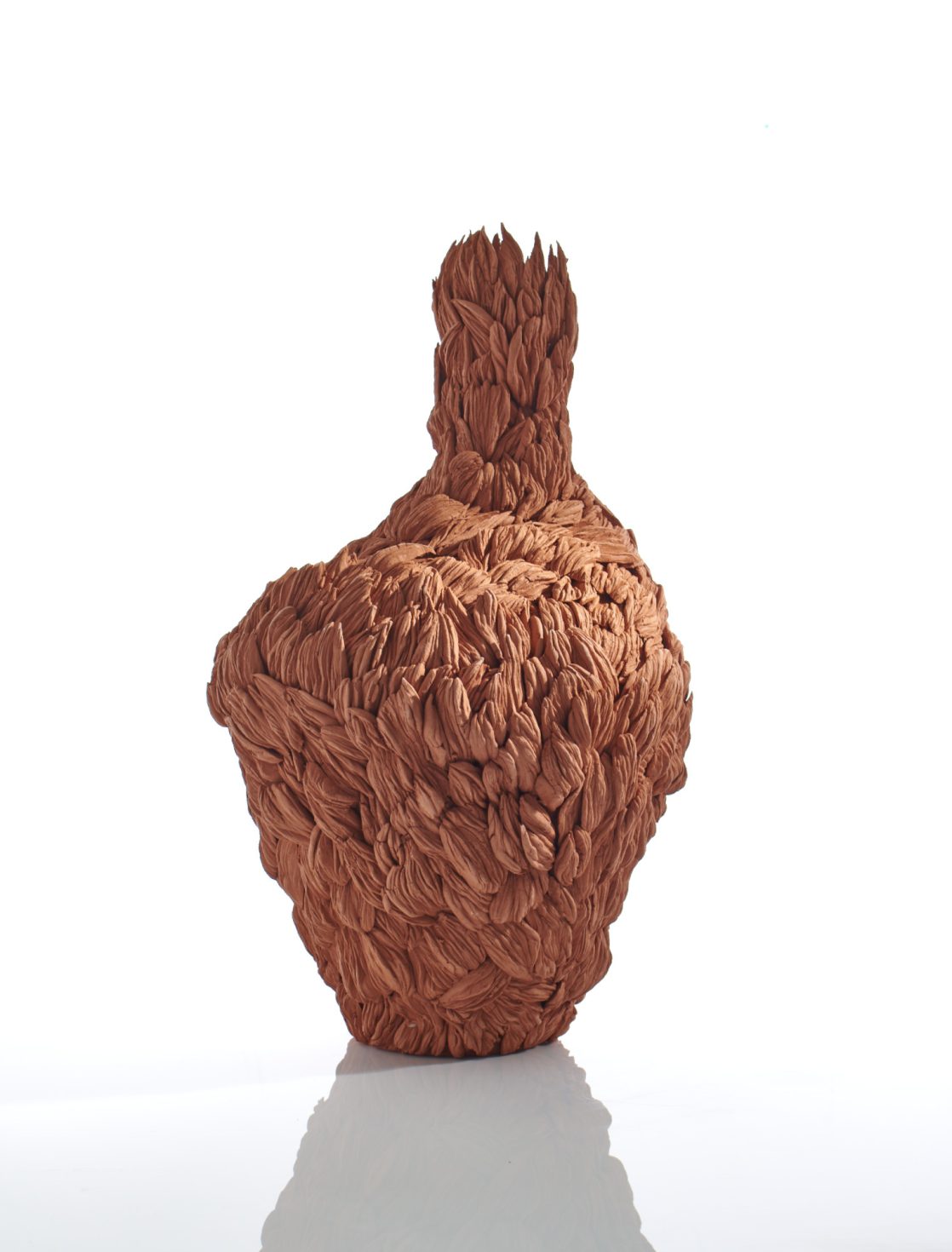
My work can be described as the result of a free, intuitive process rooted in strong observations of the clay body. Although I always begin with a design in mind, the outcomes are fluid depending on my interaction with the clay, the possibilities that eventually arise, and the clay’s reaction during the process. My work evolves in a slow and deliberate sequence, echoing in many ways the labour of a landscaper; to make the ‘landscape’ of the clay more attractive by altering the existing design and adding ornamental features. I create forms that celebrate the authentic beauty of clay.
I consider myself an artist who works predominantly with ceramics. My background in fine arts allows me to move between ceramics, painting and collage. When I feel the need to pause working with clay, when I feel blocked for some reason, I allow myself time off my practice and go back to painting or collaging. I have recently been experimenting with painting on paper using clay slip and have really enjoyed it.
My background is diverse; I have a Bachelor of Law, diplomas in Pastry Arts and degrees in Art History and Visual Arts. I recently received a first-class BA in Contemporary Crafts – Ceramics from the University of Hertfordshire and I am currently doing an MA in Ceramics at the Royal College of Arts. I believe my background in culinary arts contributes to my ceramics practice. Many of the movements I used when working with chocolate are now incorporated into my work. The malleability of chocolate resembles the clay body. In a way, my pieces displays this intersection of techniques.
It really has been a journey from culinary to clay. I work predominantly with the traditional methods of coiling and slabbing, incorporating hand-shaping techniques that I developed using skills from pastry cuisine. The tools I use are minimal – I often incorporate elements I find in nature, such as pebbles and tree bark, as mark-making objects.
The organic forms that surround me are my constant resource, no matter where I am in nature. They draw my attention and compel me to look more closely to investigate the material and the intricate designs. Geological formations, landscapes and the rhythmical patterns present in the natural world are persistent influences in my work. The vitality of ancient vessels is another element that greatly impacts my practice. Archeological pottery that exposes the clay body rather than sheltering it with glaze has always had a strong appeal to me, and my work reflects this influence.
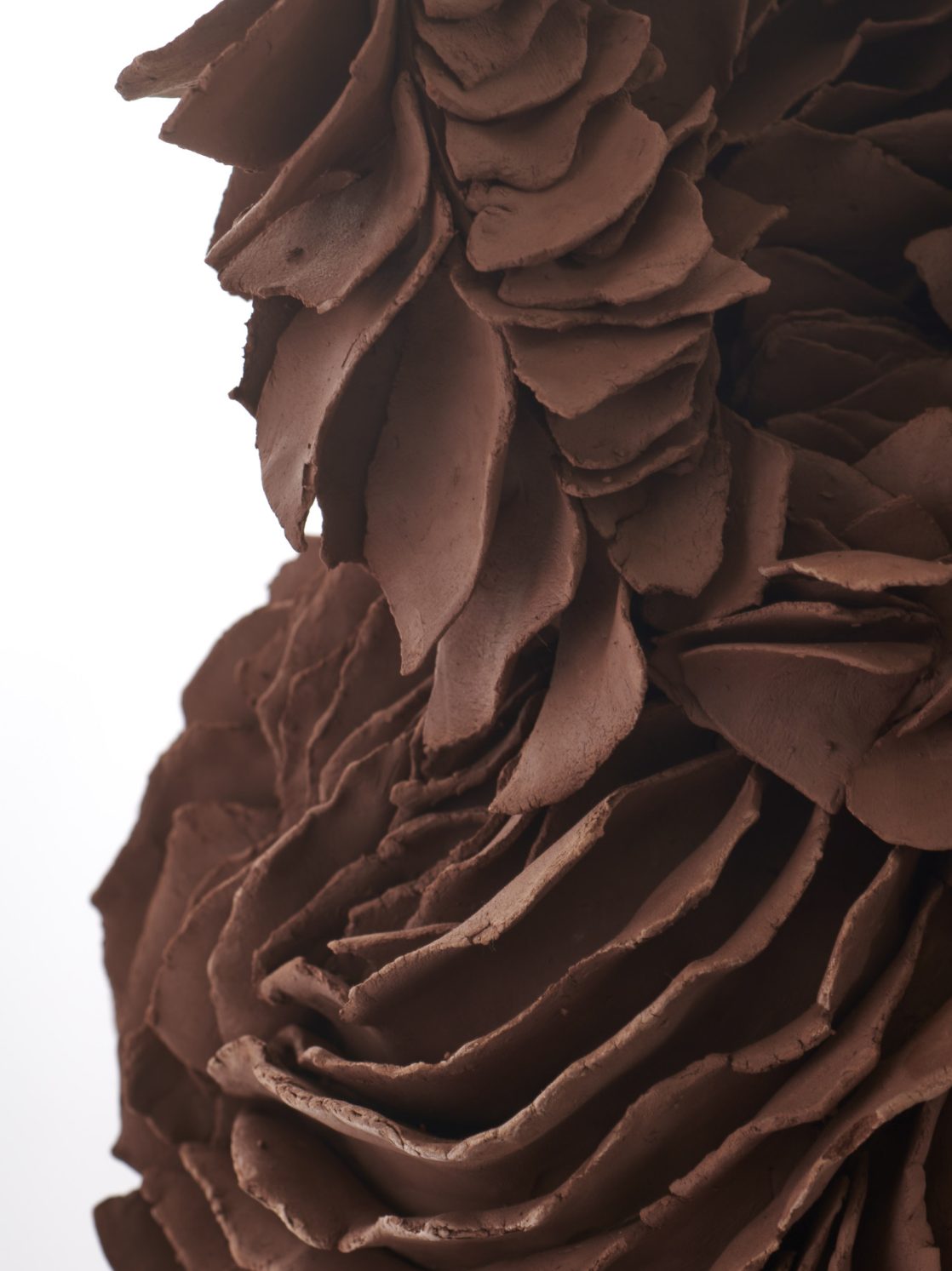
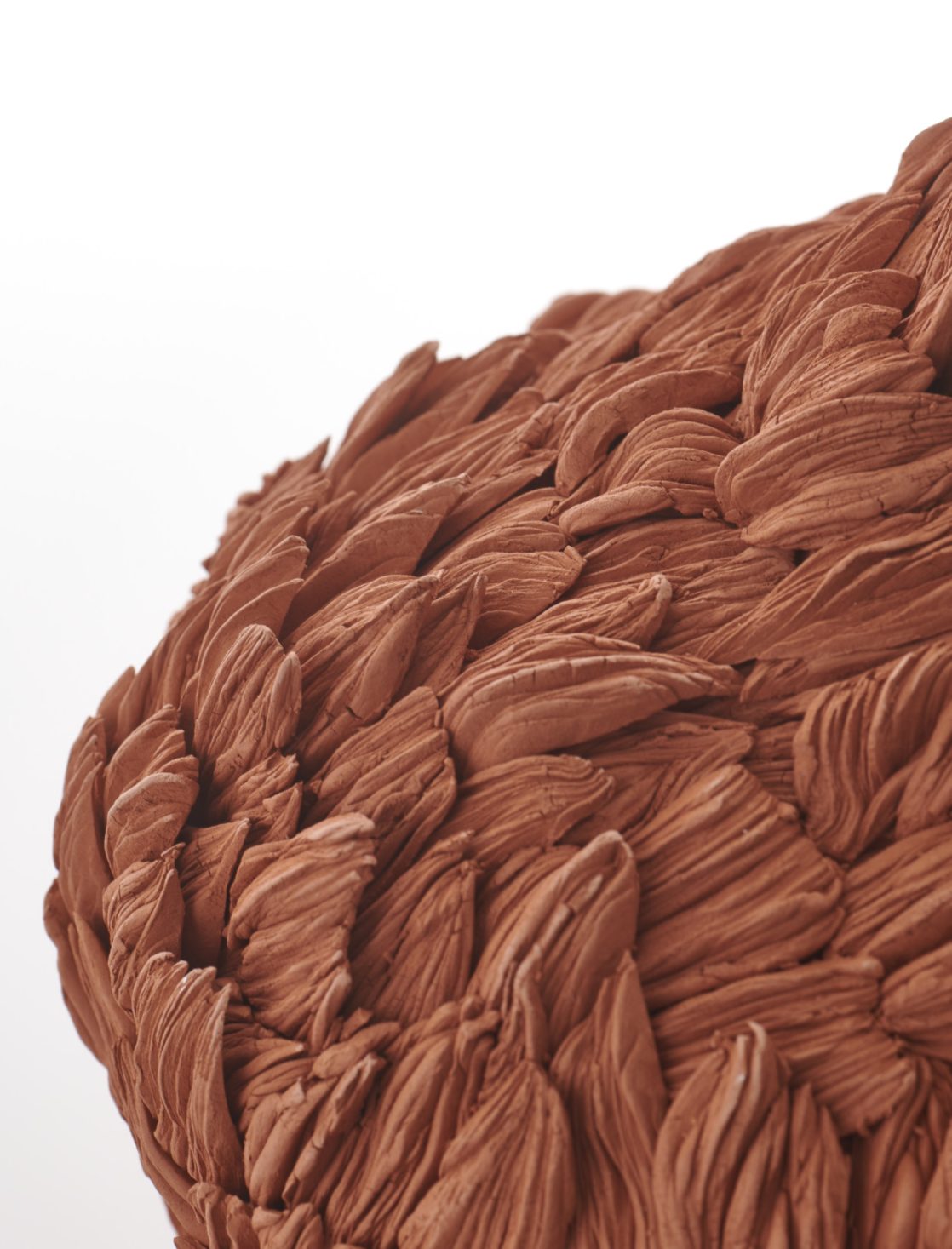
The textures engraved on my pieces instigate tactility from the viewer. Even my simple vessels carry elements such as small crumbs or shavings that are able to generate a desire for touching. Because it is unglazed clay, people often ask me what material I use, assuming it is not ceramic. The common perception that connects ceramics to glazed surfaces dismisses elements from archeological pottery, increasingly abandoned in contemporary crafts. With my work, I seek to initiate a dialogue about how contemporary ceramics focus on glazed, glassy coated objects and the importance of making clay objects that look like clay, conveying characteristics that have been around for more than 20,000 years. What I seek with my work is to pay homage to clay’s ancestry.
The experimentation of different clay bodies is in the foreground of my work. Each soil tells a specific story from where it was dug and my practice seeks to translate this soil into art, preserving the clay’s natural traits as much as possible. My process includes researching soils from all over the world; the variety in coarseness and hues from different clay bodies fascinates me. In my debut collection, I worked with clay from Brazil, the UK, Spain and France, and I could not have achieved the same results had I only worked with one single source.
I investigate the clay under different temperatures and document all the results. I like to experiment firing earthenware clay at stoneware temperatures. Although many clay bodies collapse under a high temperature, some resist and produce exceptional shades resulting from the iron content. I love ancient firing techniques such as pit-firing, raku and saggar. Currently, all my firings are in electric kilns, but I now have access to a gas kiln and have started to test my clay in different atmospheres. In the future, I plan to have a studio on the outskirts of London, where I will be able to develop the firing techniques I am passionate about.
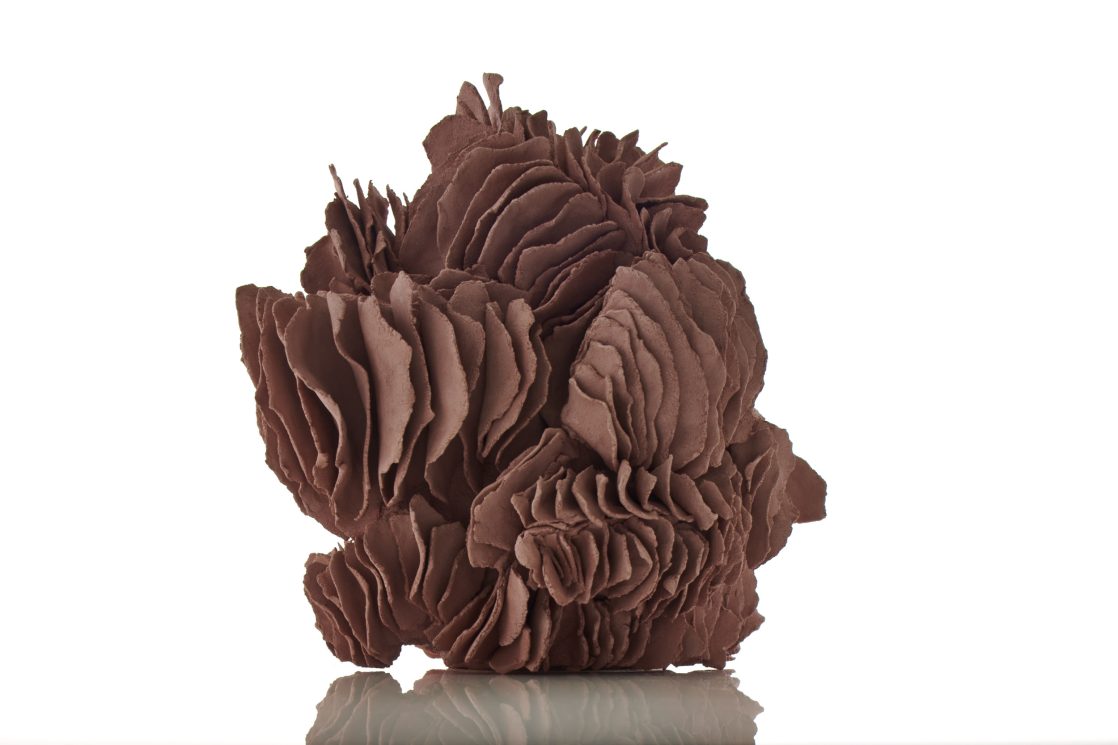
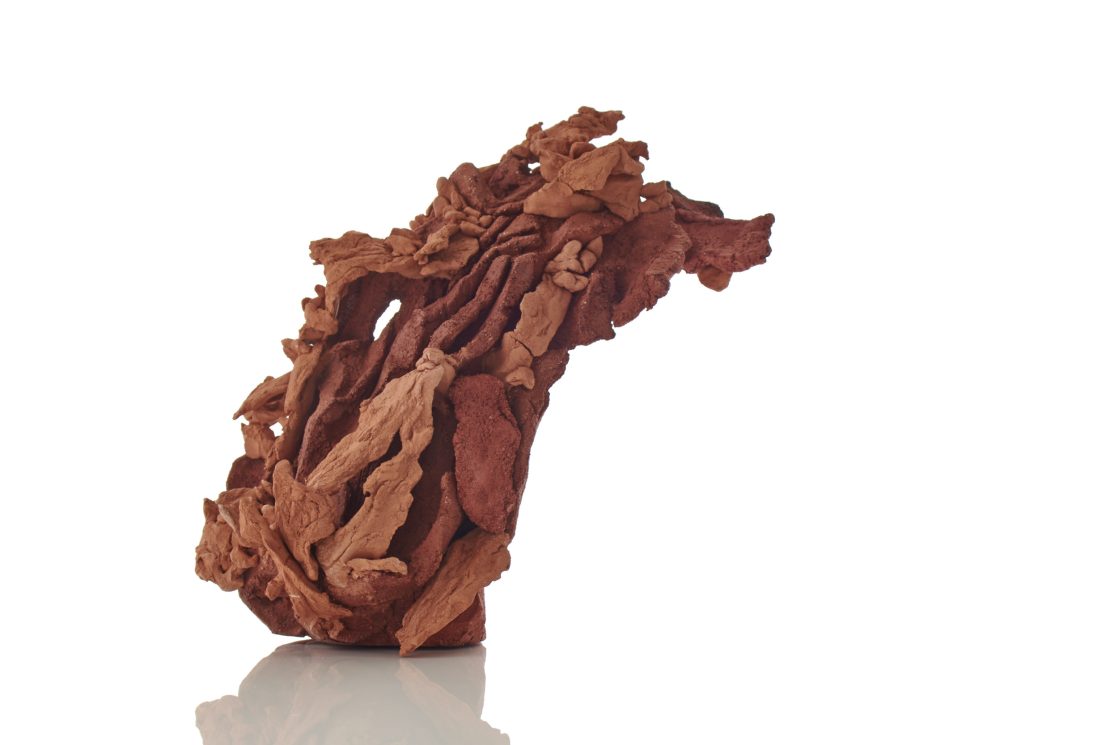
Glazes have never appealed to me and I find the glazing process tedious. My work is completely unglazed – the few colours that I have used come from clay slips and terra sigillata. It is paramount that my pieces portray the organic traits of the clay body after they are fired, displaying the beauty and the flaws originated by the fire. In this sense, they connect to the principles of wabi-sabi, with an aesthetic that reveals a tranquil simplicity and celebrates the intrinsic imperfection of the material. I love colour though, so it is on my list to experiment with clay bodies dyed with natural oxides.
The first time I felt in complete consonance as a maker was when I tried ceramics at a visual arts programme I attended when I was living in Canada. The tactility, unpredictability and transiency of clay, aligned to its historical significance, drew me to the media instantly and ever since I have felt at home with ceramics. My first influence was my tutor, the Canadian artist Alwyn O’Brien. Her abstract, asymmetrical, and sometimes chaotic pieces impacted me and made me think outside the boundaries of traditional ceramics. In Europe, the unconventional art of Ewen Henderson and the unrefined works of Sabine Pagliarulo are important references that I always return to when I feel a lack of creativity. Last but not least, Gao Zhenyu’s reverence for raw clay and his exceptional unglazed vessels resonate with my own practice.
A pivotal moment was my move from Canada to London, and the subsequent connection to the tutors at the University of Hertfordshire. The guidance of Emma Marks and Antje Illner was paramount and enabled me to find my own identity as a maker, pushing my boundaries and beliefs while encouraging a relentless and unlimited experimentation of the material, deconstructing the conventional parameters I had brought with me when I moved from Canada. If you look closer at my work, you can see their ‘fingerprints’ and I will always be grateful for their mentorship.
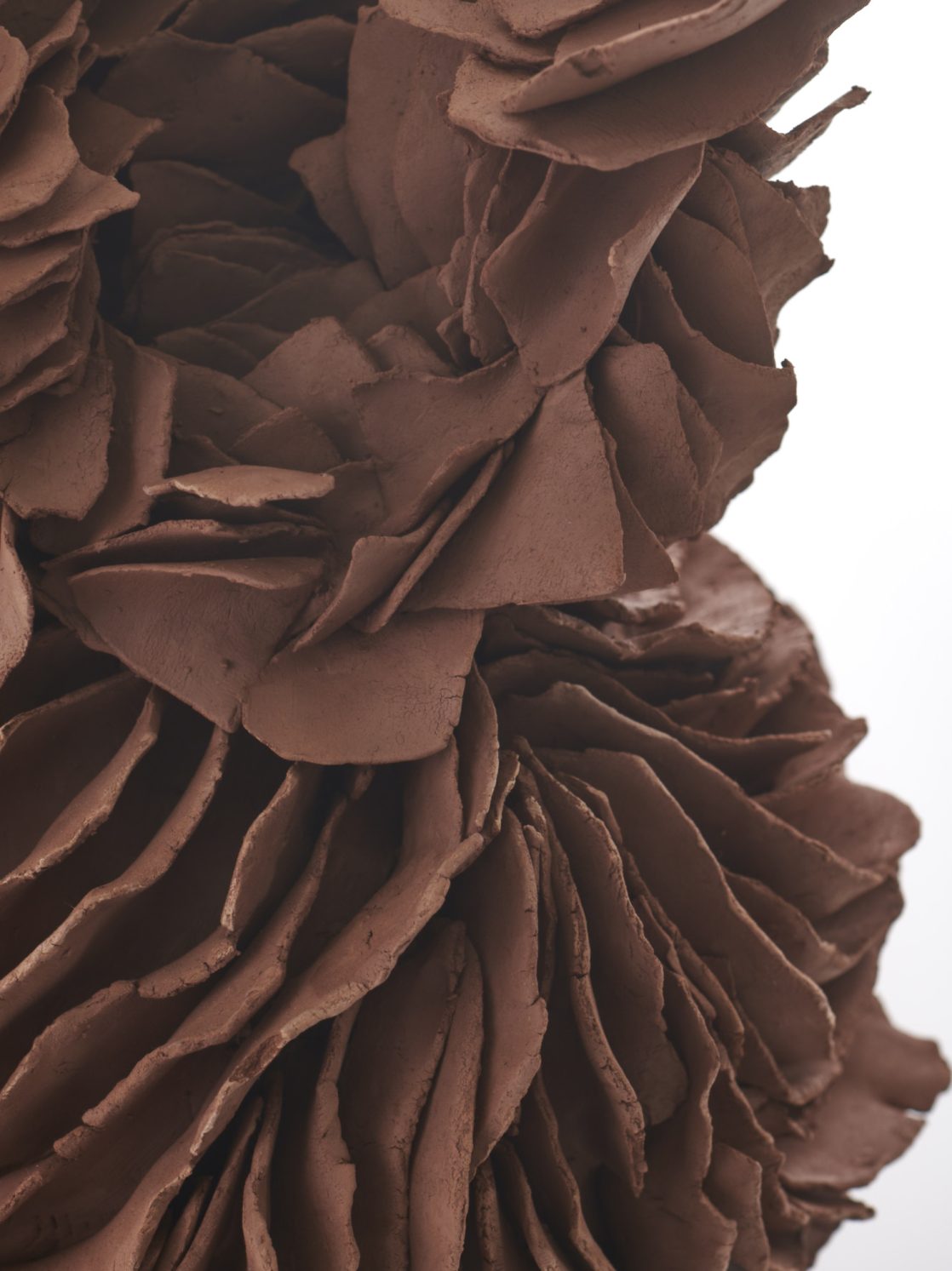
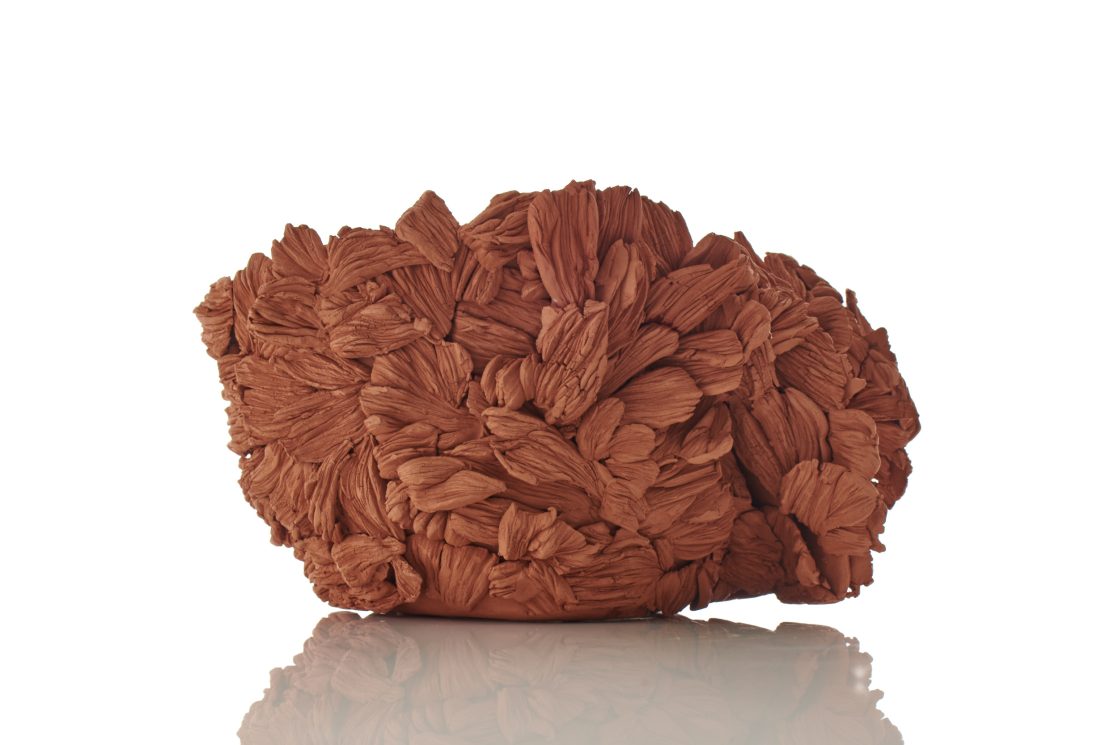
It was extremely rewarding to see my work recognised for the Ceramic Review award and I felt honoured to receive it amongst the many skilled artists at New Designers. It was a special moment that I will never forget. As an emerging artist, New Designers was a unique experience. The show was well organised and facilitated participants not only to promote their work but also to make great connections with people from all over the UK. At the moment, I am involved with my MA at the Royal College of Arts and starting to plan for my degree show in July 2024. It is a big project that will push my clay-building skills further and I am looking forward to seeing it come together.
For more details visit barrstudio.art; @barrstudio
Images: courtesy of the artist; all photography by Sylvain Deleu